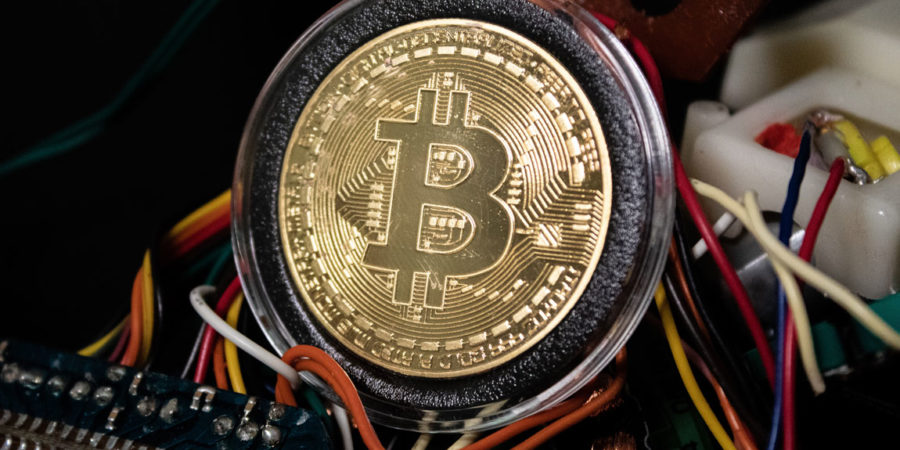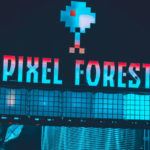Gary Vaynerchuck is arguably the godfather of the consumer internet. He called blogging, Amazon and social media in the early 2000s, personal brands and cryptocurrencies in the early 2010s; he even predicted Joe Rogan would sign a $100 million licensing agreement for his podcast years before it happened.
When it comes to the internet and people, Gary seems to have foresight like none other. So when he says NFT’s feels like web 2.0 (think social media). You’d be wise to pay attention.
“I think it’s the next evolution in the digitalisation of society: Web 1.0 was digitized information, Web 2.0 was digitized socialization, [and] Web 3.0 is going to digitize assets. I’m completely convinced. I think the NFT thing is big, way big”
Many of us have been introduced to NFT’s by headline stories about exorbitant sums of money thrown around for pictures on the internet. But this thing goes way further than that.
To understand why we need to look under the hood.
NFT stands for non-fungible token. Non-fungible means it’s unique and can’t be copied by someone else, only a single instance of each NFT existing.
Fungible just means interchangeable, like two socks in a pair. They are equal to each other in use and value. It doesn’t matter which sock you put on which foot; you get the same outcome.
Non-fungible means not interchangeable. If you got a hole in one of your socks, it wouldn’t have the same value or use as the other sock and, therefore, is not interchangeable with that sock.
As such, NFT is just a label for the thing it represents. You could own 100 fungible socks in 50 perfect pairs, or you could own 100 non-fungible socks with random holes in them, making them unique. Replace socks with ‘tokens, and you have an NFT.
Instead of living in your sock drawer, though, these NFT’s live on a blockchain. Like Ethereum or Bitcoin.
Have you ever thought about the life of a $1 coin? How far has it travelled, how many hands has it touched, how long it hid down the back of John’s couch. A blockchain makes that possible.
A blockchain is a ledger of transactions managed and verified by a network of computers that talk to each other. Imagine that $1 coin in digital forms, like the numbers you see on your screen when you’re internet banking. If that dollar lived on a blockchain, you’d be able to see everywhere it has travelled and how long is spent at each destination, tracing right back to when it was minted.
If I lost you at ‘ledger of transactions’, think about these like an accounting ledger. Debits and credits. Dollar in, dollar out. The only difference here is the ledger is in digital form, and rather than managed by a human with pen and pencil, it’s controlled by computers who do all the debits and credits for us.
“Block’ – ‘Chains’ because transactions on the ledger are batched and recorded in blocks. On bitcoin, for example, roughly every 10 minutes, a new block of transactions is completed. These blocks, when added together, form a chain.
NFT’s are a type of ‘smart contract’, and like a regular ‘contract’, they can contain meta-data (information) except in digital form. For instance, this information could be a phone number, a legal agreement, or a link to a jpeg file, like this picture called a ‘cyptopunk’.
You can think of the NFT, “the smart contract”, like a digital certificate representing ownership of the image. So you’re not exactly buying the picture. The NFT is not the picture but a few lines of code that link to where the picture lives online.
This goes beyond links to jpeg files.
Kings of Leon recently created some NFT’s that give the owners access to previously unreleased music. The NBA is selling NFT’s of video highlights (gifs). Mark Cuban, the Mavericks NBA basketball team owner, is looking at issuing tickets to games as NFT’s.
Digital art and memorabilia that used to be worthless are now ownable assets worth anywhere from one to millions of dollars.
What’s cool about this space is the smart contracts that prove ownership of the data lives on a blockchain. So, their transaction history is public information, and anyone can verify their ownership on websites like Etherscan.
You don’t need to be a technorati to get involved, either.
Sites like Opensea;
And NFTYGateway
Provide digital marketplaces where you can create an account and start trading NFT’s right now.
If you’re wondering how many people are doing this, at the time of writing this article, Opensea just became the first NFT trading platform to pass a billion dollars in 30-day trading volume.
The biggest story reverberating around the space and a tipping point for NFT’s is Beeples ‘The first 5,000 days’ auction. He created a montage (see below) of digital art he produced across 5,000 days and sold it as a single NFT, called ‘The first 5,000 days at Christie’s auction house. It fetched $69 Million.
You might wonder why someone would pay so much for something I can screenshot and share in this blog post.
It’s no different to physical art. You can find 1000 digital prints of the Mona Lisa, but there’s only one owner. The best part about a blockchain is, you don’t need an art purveyor to verify the authenticity of a painting; you just need access to the blockchain transaction history the NFT was ‘minted’ on.
Sure, I can screenshot ‘The first 5000 days, but there’s only one publicly verified owner.
Once someone buys and owns an NFT, they can store them in their digital wallets. Like your mum wallets packed with loyalty cards, pictures of the kids and an old ticket stub from the movies last year, your digital wallet acts the same way for all things digital like NFT’s.
There’s a range of different options here like Meta-Mask, Trust Wallet, Enjin. Each has its pros and cons. Depending on the wallet you go with, you can fire it up on your phone or laptop and view or show off every digital asset you own, whether cryptocurrencies, NFT art, NFT music, tickets to a Mavericks game, whatever. If it lives on a blockchain, you can hold it in your digital wallet.
I, like many others, believe this is just the beginning for NFT’s. Today’s headlines like ‘Opensea just passed 1 billion in 30-day trading volume’ will be footnotes in the future.
Gaming looks to be the vertical that will take NFT’s mainstream. Gamers are well familiar with digital art, like skins you can buy for your characters in the game. NFT’s are just an extension of this already existing world, except now the value isn’t locked in a single game; those skins can be sold for real money, allowing those nerds to make a full-time living from gaming.
We’re only just scratching the surface of what’s possible. NFT’s are here to stay.



Comments: 3
Hey I was happy discovering this article. We stay updated on the crypto currency sector.
Hi there, its nice article concerning media print, we all be aware of media is a great source of data.
Nice article. I just shared it on Pinterest. Keep up
the good work.